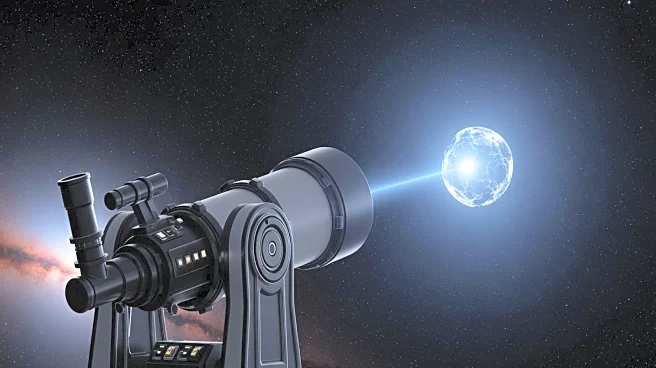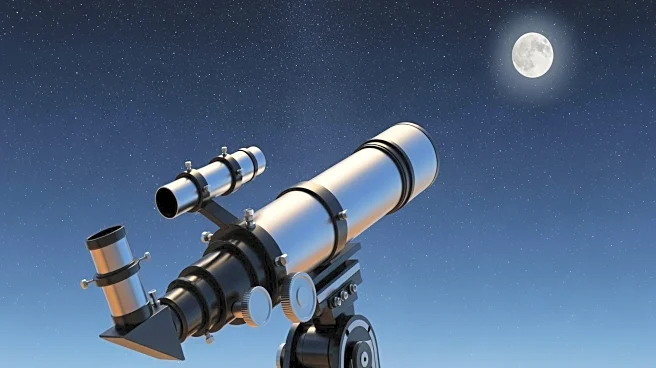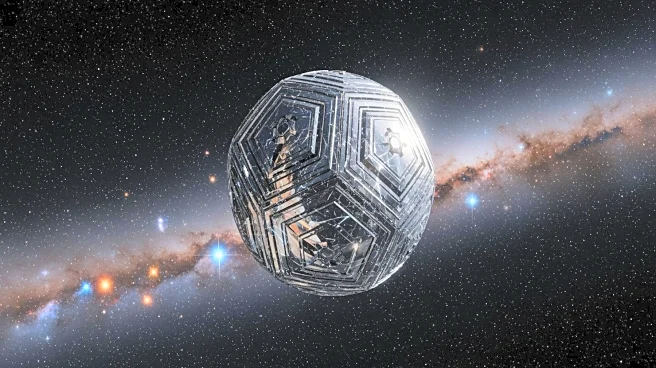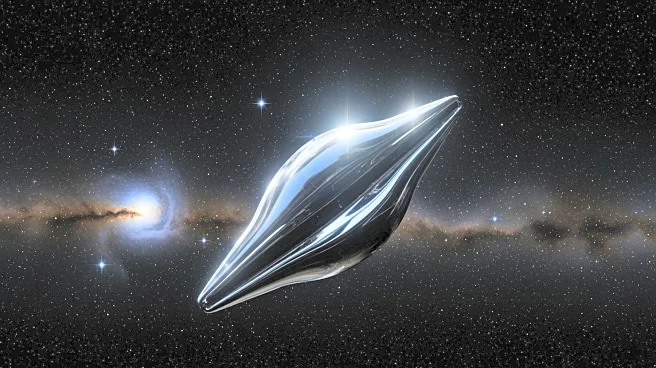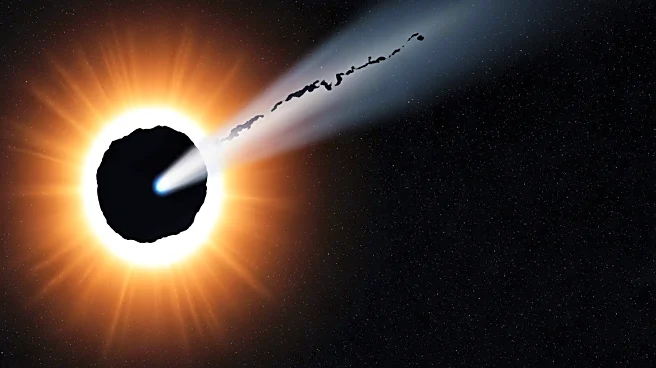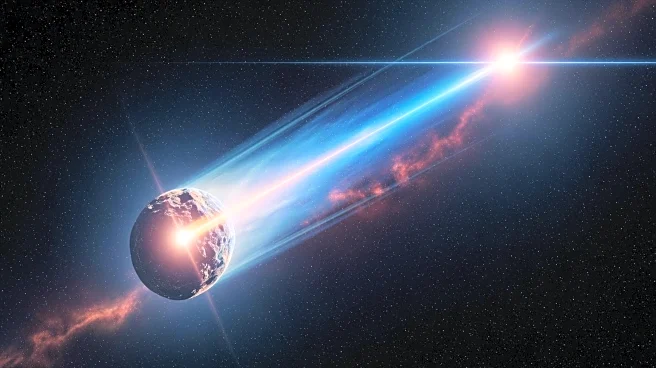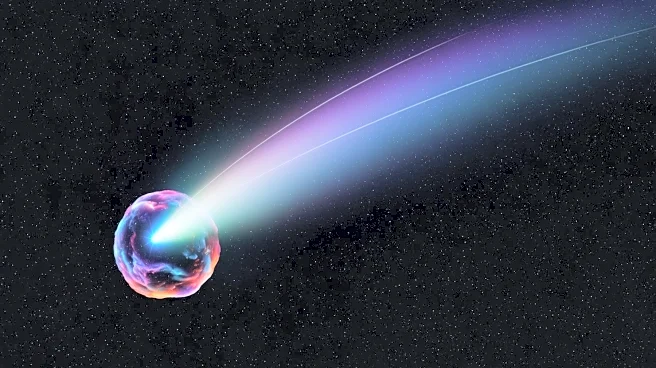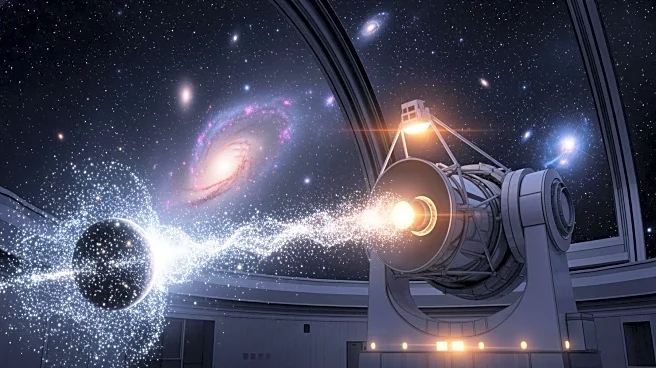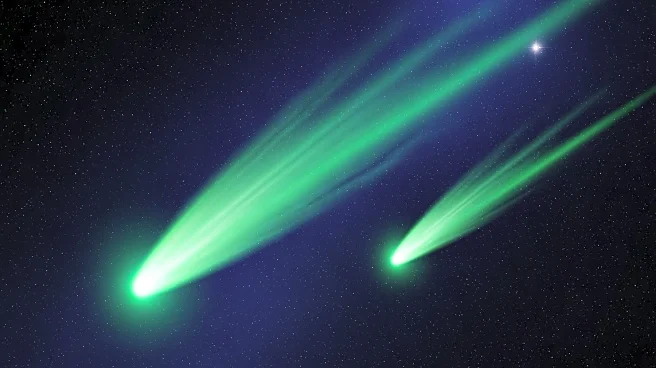What's Happening?
Astronomers are closely studying 3I/ATLAS, an interstellar object that has entered our solar system, sparking interest due to its unusual speed and trajectory. The object, which some speculate could be
a comet from a distant part of the universe, is being analyzed to determine its origins and age. Recent studies have attempted to trace its path over the last 10 million years to understand whether it has received any gravitational boosts that could explain its current velocity. The object is estimated to be between 7.6 and 14 billion years old, based on its speed and lack of gravitational influences. This age estimation is significant, as it suggests the object could be rich in water ice, a hypothesis that will be tested as it approaches the sun.
Why It's Important?
The study of 3I/ATLAS is crucial for understanding the characteristics and origins of interstellar objects, which can provide insights into the early universe. If the object is indeed as old as estimated, it could offer valuable information about the conditions and materials present in the early solar system. The presence of water ice would support theories about the distribution of water in the universe and its role in the development of life. Additionally, the research highlights the challenges and limitations faced by astronomers in studying such distant and fast-moving objects, emphasizing the need for advanced technology and methods in space exploration.
What's Next?
As 3I/ATLAS approaches the sun, astronomers will observe whether it releases water vapor, which would confirm its icy composition and support the age estimation. This observation period will be critical for validating current theories and may lead to new questions about the object's journey and composition. The findings could influence future research directions and priorities in the study of interstellar objects and their impact on our understanding of the universe.
Beyond the Headlines
The investigation into 3I/ATLAS also raises broader questions about the nature of interstellar travel and the potential for life beyond Earth. While most scientists remain cautious about speculating on the object's origins, the possibility of it being a spacecraft, however remote, captures the imagination and highlights the intersection of science and science fiction. This case underscores the importance of maintaining scientific rigor and openness to new possibilities in the face of limited data.
